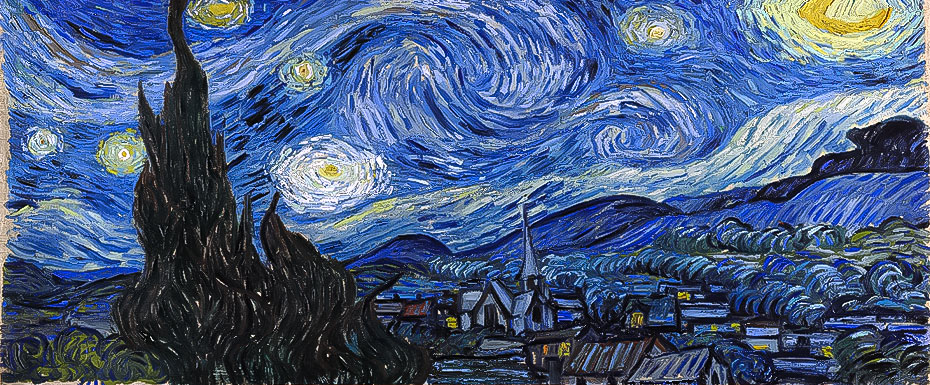
The Dutch post-impressionist, now a key figure in the world’s art history, could barely make ends meet and had little to no recognition before he took his own life. In this article, we explore the twists and turns of Van Gogh’s fate that incited his creative side and ultimately led him to his demise.
Early Years
Vincent van Gogh was born in the village of Zundert in the south of the Netherlands on March 30, 1853. His father, Theodore van Gogh, came from a once noble family and was a “priest by inheritance” – most of the men in his family devoted themselves to religion. Mother, Anna Cornelia, lived in a world of fantasies – from time to time, she wrote long letters about life and covered notebook sheets with simple figures of animals and plants.
Over time, the priest’s house got filled with children’s laughter: five more kids appeared in the family. As an adult, Vincent kept in touch only with his brother Theodore. Theo became a real friend for the artist and accompanied him throughout his life.
Vincent inherited his mother’s personality: one day silent and pensive, the other – the most mischievous among the children. Sometimes he brought his drawings and clay figurines to boast in front of his parents but literally, in a moment, he would tear or break them with fury.
When Vincent was twelve, his father sent him to a boarding school. The boy felt lonely and abandoned and begged his parents to take him back. Instead, a couple of years later, his father transferred him to an even more distant high school. There Vincent was painting from time to time but did not feel happy, and two years later, at the age of fifteen, he returned home without explanation. Later, in a letter to Theo, he said his youth was “austere, cold, and unproductive.”
Success in Commerce
The family was worried about the future of the eldest son. In 1869, the sixteen-year-old began to work as a dealer in paintings for Goupil & Cie company.

Vincent carried out the tasks with zeal. He liked to revolve in artistic circles and gradually became well-versed in painting and fashion trends. The management noted Vincent’s diligence and decided to transfer him to the London branch. In 1873, the young man moved to England. For him, this year was one of the happiest: money, good work, a lot of free time, frequent visits to museums and galleries.
It was during this time that Vincent fell in love for the first time – but alas! The girl was engaged to another and rejected Vincent. He was very upset with this failure – in his letters, discussions about God and religion appeared more and more often.
Teaching, Bookmaking, Religion
In 1875, his relations with the management deteriorated. Vincent resigned, forever leaving commerce, to which he devoted almost six years. The hard times began – the young man was a teacher of German and French in a boarding school, a bookseller in a small shop, a priest’s assistant. His religiosity grew more and more: he translated the Bible and devoted a lot of time to church services. In 1877, Vincent decided to be a pastor and entered the Theological Academy but failed the entrance exam. He soon became a missionary in a Belgian village, but almost immediately, the church authorities asked him to leave.
At this moment, Theo, whose commercial affairs were going uphill, supported Vincent and encouraged him to seriously engage in painting – in the end, his brother was always interested in art, and his drawings seemed promising.
Artistry
In 1880, Van Gogh moved to Brussels: he was in high spirits and made plans for the future. The man wanted to improve his drawing skills, perhaps even learn from some famous artist, and then start earning a living on his own. Vincent practiced creating still lives, painted by all students of classical art institutions.
In 1882, Van Gogh took a pregnant prostitute Siena and her five-year-old daughter into his house. Sienna lived with Van Gogh for several years and is featured in many of his drawings. The relationship was difficult: pressure from parents, a woman’s past, a child alien to the artist. On top of that, Van Gogh could not make money with his drawings. The family barely paid the bills, and at the end of 1883, Vincent left Siena.
Moving to France
Vincent was determined to move to Paris with his brother, believing that only there could he learn real art as opposed to boring mechanical redrawing. Contrary to the objections of Theo, who believed that it was better for the older brother to return to his parents, Vincent went to Paris.
Inspired by the free atmosphere of the city, Vincent began to paint in bright colors. They also contain hints of the Japanese style, which he became interested in during his studies at the Academy. Comparing the light and colorful works of that time with the previous dark works, it is difficult to believe that they belong to the hand of one master.
Creative Commune and Mental Disorder

Vincent confessed to his friend Paul Gauguin: “Even while I’m working, I don’t stop thinking about creating a studio where you and I could be permanent residents and which would be a haven for our friends in moments when they find themselves in a creative dead-end”. Gauguin, who was also disillusioned with the atmosphere of Paris, succumbed to persuasion and arrived in Arles in the fall of 1888.
At first, nothing foreshadowed trouble – friends drew together, made plans, and walked a lot. Nevertheless, quarrels soon began: Paul Gauguin, being naturally arrogant, did not want to cooperate on equal terms.
The exact details of the incident are unknown, but after several days when the artists were locked in the house due to downpours, Van Gogh assaulted Gauguin with a razor. After the quarrel, Vincent returned to his place, where he probably had a seizure, during which he cut off his ear in the hope of atonement for his friend. Gauguin, of course, had already left Arles by that time.
Vincent was admitted to the hospital, where he was diagnosed with acute mania with general delirium. Almost immediately, the flustered Theo came rushing in. After being discharged, Van Gogh returned to his Yellow House, continued to work, and claimed that he felt completely healthy.
However, the mental disorder did not recede: the artist suffered from insomnia, hallucinations, and persecution mania. Soon, attacks began to recur, during which he did not recognize the attending doctors and was delirious. In moments of clarity, Van Gogh continued to create paintings. It was during this time that Van Gogh developed his recognizable drawing technique: ornate swirling strokes.
Vincent began to realize the gravity of his illness and that he needed special care. He asked Theo to help with the transfer to an asylum in Saint-Remy. Van Gogh planned to stay there for a couple of months in order to improve his health and then join military service – he needed discipline and strict guidance, in addition to relieving Theo of financial burdens.
Asylum and Suicide
In Saint-Remy, Vincent saw that there were states much worse than his – he realized that he had to and could cope with his illness in order to return to the world and create. Over time, he was allowed to walk around the monastery. Van Gogh painted a lot in his recognizable style: the impressionists are rejected, academic lessons are forgotten.
With the onset of autumn and cold weather, the condition worsened. Vincent continued to work hard and reproached himself for Theo’s need to pay for the asylum. Suddenly, a long article by an art critic Albert Aurier appeared in one of the European magazines, where he admired Van Gogh’s paintings, calling them “strange, intense, feverish creations” and praising “his deep, almost childish sincerity.”
Vincent’s soul was restless still. Seizures rolled in waves, he raved and raged, and in the moments of relief, he did not remember anything. On July 27, 1890, Vincent went for a walk as usual. He wandered for a long time under the scorching sun, waited until nightfall, and fired a pistol in his stomach but didn’t manage to kill himself. The artist lived for two more days: he smoked a lot, did not want to communicate with the police, and talked about life with Theo, who came rushing on the very first train. Vincent van Gogh, 37, died of
blood loss at dawn on July 29, 1890, leaving a sublime, majestic but tangled and psychotic legacy for posterity.





